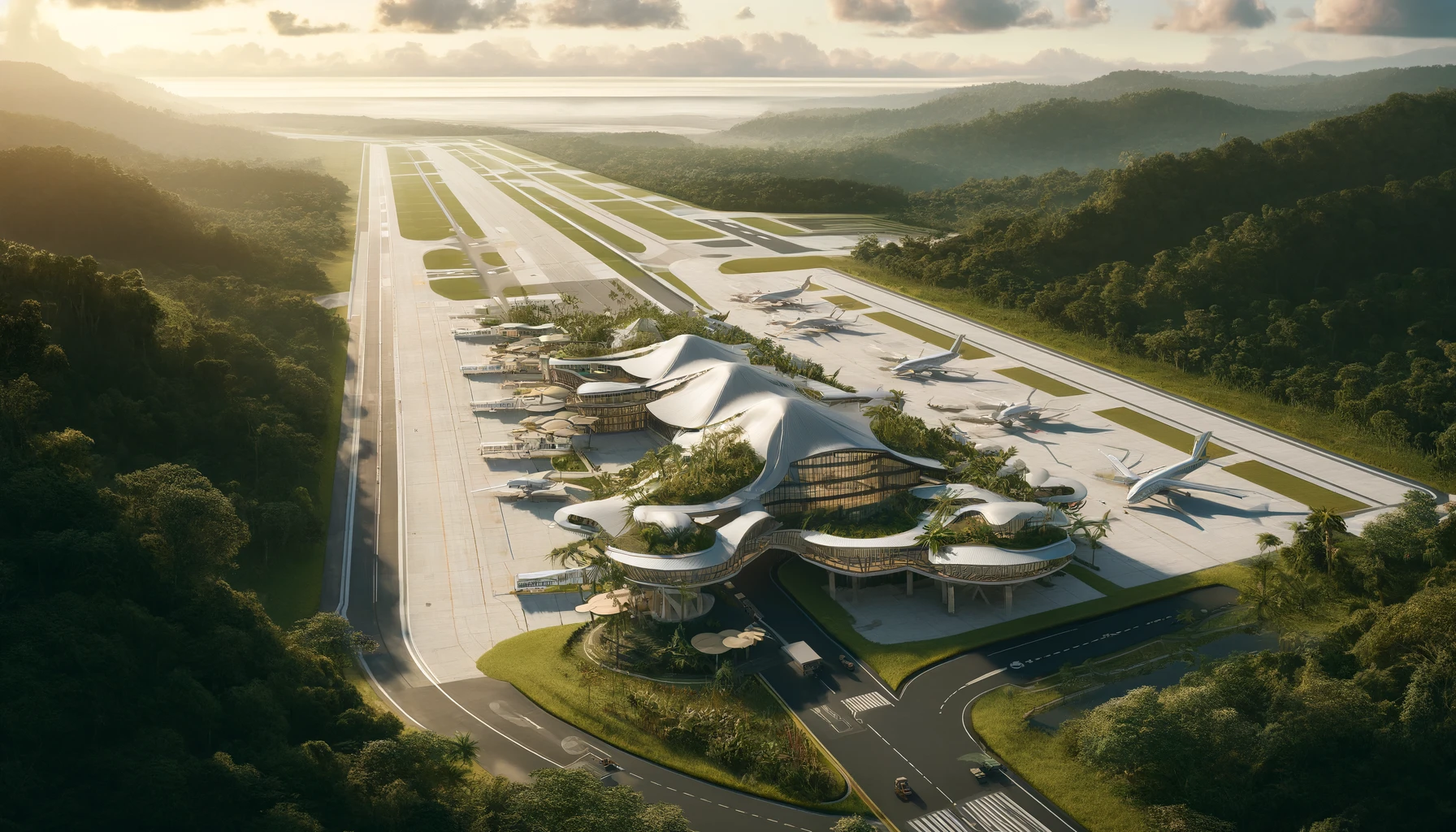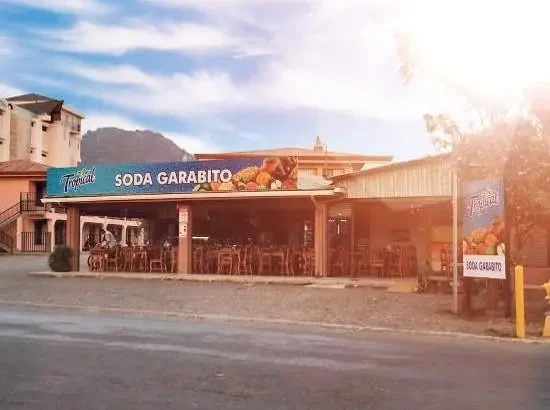Brunca International Airport: A New Gateway to Costa Rica’s Osa Region
The Osa region in Costa Rica is known for its lush jungles, pristine beaches, and rich biodiversity. As home to Corcovado National Park, this region attracts eco-tourists and adventure seekers globally. Now, a new proposal aims to make this stunning destination more accessible: the Brunca International Airport.

Overview of the Brunca International Airport Project
The Brunca International Airport promises to transform the Osa region. However, is it really needed?
Located near Palmar Norte, this proposed airport will accommodate international flights, significantly reducing travel time from global hubs. Additionally, it will reduce congestion at the main airport in San Jose. The project is currently in planning, with construction expected to begin in the next few years.
The primary objective of the airport is to boost tourism and economic growth. By providing a direct gateway to the Osa Peninsula, it aims to attract more visitors, create jobs, and stimulate local businesses. For eco-lodges like Vayu Retreat Villas, this development could be a game-changer.

Impact on Tourism in the Osa Region
Whale watching, beautiful beaches, and bird watching are just a few of the natural attractions that make the Brunca Region a “hot spot” for tourism. The construction of an international airport, as promised by President Rodrigo Chaves, would significantly enhance these opportunities. The new airport is expected to turn the Brunca Region into a premier destination for Costa Rica, attracting visitors from around the world. But it is not fully accepted by the locals yet (keep reading)
One of the most exciting aspects of the Brunca International Airport is its potential to revolutionize tourism in the Osa region. Visitors often face lengthy travel times, including multiple flights and road transfers, to reach their destinations. For instance, a car trip to Corcovado National Park lasts more than seven hours (from SJO), while it takes six hours to Drake Bay. Establishing a direct connection with international flights would allow the transfer of foreigners directly, encouraging more visitors.
With increased accessibility, the region is likely to see a surge in visitor numbers. This influx of tourists will benefit local businesses, from restaurants and tour operators to hotels and resorts. For those looking to experience the best Costa Rica resorts, the new airport will make it easier to discover hidden gems like Vayu Retreat Villas.

Economic and Environmental Considerations
The Brunca International Airport represents a great opportunity for the tourism sector in the South, aiming to exploit its natural beauty on a larger scale and generate more wealth and jobs in the South Pacific. However, the project, which has been brewing since 2004, has faced excessive bureaucracy and environmental opposition.
While the economic benefits of the Brunca International Airport are clear, the project also raises important environmental considerations. The Osa Peninsula is known for its pristine ecosystems and diverse wildlife, making it crucial to balance development with conservation efforts. Proponents of the project have emphasized the implementation of eco-friendly practices and technologies to minimize environmental impact. These measures include sustainable construction methods, energy-efficient infrastructure, and programs to protect local wildlife and habitats. The goal is to create an airport that supports economic growth while preserving the natural beauty that makes the Osa region so special.
In recent days, the government of Rodrigo Chaves ordered archaeological feasibility studies in the area, aiming to develop the project. This first step fills the region with hope, envisioning a leap forward similar to what other regions like Guanacaste have achieved. The archaeological study, conducted by the National Museum, is expected to take 12 months, followed by six months for the extraction of findings.

Community Reactions and Involvement
The proposal for the Brunca International Airport has elicited mixed reactions from the local community. Many residents are optimistic about the potential economic opportunities and improved infrastructure. However, there are also concerns about environmental degradation and the impact on the region’s traditional way of life.
To address these concerns, project planners are actively seeking input from the community. Public forums, surveys, and stakeholder meetings are being organized to gather feedback and ensure that the development aligns with the needs and values of the local population. This collaborative approach aims to create a project that benefits everyone while respecting the unique character of the Osa region.
William Rodríguez, Minister of Tourism, emphasized the importance of local business involvement in building tourism projects to generate the demand an airport requires. The natural attractions are just part of the region’s offerings, and “Business owners need to work on the construction and marketing of tourism products.” Archaeological sites, such as the Ballena Marine National Park, the Térraba-Sierpe Wetland, Caño Island, and Corcovado, part of Costa Rica’s extensive network of nature preserves, would further encourage bird watching, whale watching, and visits to the beaches. The new Marina in the region of Golfito would benefit from the increased tourism the new airport would bring.
Social System Impact
The impact of revenue generated from the addition of a new international airport would help fund much-needed improvements to social systems and aging infrastructure. “It is well known that the Brunca region is the poorest in the country. Their educational conditions, both in the school and collegiate infrastructure and the teaching programs that are not adapted to the labour demand of that extensive territory are the cause of high unemployment; and therefore, high indicators of the level of social backwardness,” wrote Diaz in a 2019 oped who is the current Minister of the Presidency.
That boost from local tourist dollars would help fund much-needed advances in roadways and a failing electrical system. Investment in the area is needed to guarantee the future of this region. While being mindful of preserving the important environmental ecosystems.

Balancing Development and Preservation
The airport promises economic benefits and improved accessibility. Nevertheless, concerns about over-urbanization remain. Residents and environmentalists fear the region could become similar to Guanacaste. Where this area has seen exponential growth and urbanization since the Daniel Oduber Quirós International Airport in 1995.
The natural beauty and biodiversity of the Osa Peninsula are its greatest assets. Unchecked development could threaten these resources, leading to habitat destruction. The local community wants sustainable development that preserves the region’s ecological integrity. Planners must implement strict environmental regulations and sustainable practices. This includes protecting large areas of habitat and using eco-friendly construction methods. Moreover, promoting responsible tourism is crucial. Continuous dialogue with the community and stakeholders is essential. The goal is to create a model of sustainable development for other regions. This would preserve the Osa Peninsula’s unique charm while benefiting from increased tourism.

Conclusion
The Brunca International Airport represents a bold vision for the future of the Osa region. By improving accessibility and stimulating economic growth, the airport has the potential to enhance the region’s appeal as a top destination for eco-tourism. However, it is essential to balance these benefits with responsible environmental stewardship and community involvement. At present there is no set start date. Pending archaeological feasibility studies and all things aligning it is not likely the area will see a new airport for years to come.
What are your thoughts on the proposed Brunca International Airport? Do you believe it will bring more positives or challenges to the Osa region? Share your views in the comments below and join the conversation about the future of one of Costa Rica’s most cherished destinations.




Leave a Reply